Mastigoteuthis hjorti
Michael Vecchione and Richard E. YoungIntroduction
M. hjorti was originally described from five badly damaged specimens from the North Atlantic, then redescribed by Rancurel (1973) from three squid from the Gulf of Guinea. The species is distinctive and widely distributed but uncertainty exists on the taxonomic status of populations in other oceans.
Brief diagnosis:
A Mastigoteuthis ...
- with two photophores on each eyeball.
- with very large fins (length ca 90% of ML).
Characteristics
- Arms
- Arm III equals arm I in length (needs confirmation).
- Arm III equals arm I in length (needs confirmation).
- Tentacles
- Club suckers about equal sized except near tip.
- Club suckers about equal sized except near tip.
- Head
- Beaks. Description of the beaks can be found here.
- Funnel pocket absent.
- Funnel
- Funnel locking-apparatus with oval, slightly curved depression, posterolateral sides protude; without antitragus or clear tragus. Depression undercuts posterior margin.
- Fins
- Fins large; length about 90% of ML.
- Tubercules
- Large tubercules cover mantle, head, funnel and aboral surface of arms in subadults (tubercules are often lost during capture).
- Fins
- Fins large, nearly the full length of the mantle. (see title photograph).
- Photophores
- Two large circular photophores on ventral surface of eyeball; no other photophores present.
Figure. Frontal views of the funnel/mantle locking-apparatus of M. hjorti. Left - Funnel component (uppermost), mantle component (lowermost). Drawing from Rancurel (1973). Left two photographs - Funnel component (left), mantle component (right), equatorial Pacific. Right two photographs - Funnel component (left), mantle component (right), 73 mm ML, eastern North Atlantic, 17°24'N, 22°57'W, NMNH 815489. Tissue stained with methylene blue stain. Photographs by R. Young.
Figure. Left - Lateral view of head of M. hjorti showing tubercules and olfactory organ, 48 mm ML, western North Atlantic. Also visible are two lines on the head of the lateral-line analogue of cephalopods. Photograph by R. Young. Right - Scanning electron micrograph of mantle tubercles of M. hjorti, 93 mm ML, South Africa at 80°S, 05°E. Scale 0.1 mm. Photograph from Roper and Lu (1990).
Figure. Ventral view of damaged eye of a fresh M. hjorti, western North Atlantic. Arrows point to photophores. Photograph by M. Vecchione.
Comments
More information on the description of M. hjorti can be found here.
M. hjorti bears resemblance to M. cordiformis in the presence of large fins, skin tubercules, lack of a pocket between the bridles and the large trabeculate protective membranes on the tentacular clubs but differs in the presence of ocular photophores among other features.
Molecular Characteristics
Limited molecular data is available for this species (see Mastigoteuthidae: Discussion of Phylogenetic Relationships).Life History
Vecchione, et al. (2001) described a 6 mm ML paralarva which they assummed belonged to M. hjorti on the basis of a single large photophore on each eyeball. They described the paralarva as follows:
Mantle narrow, inserts on anterior end of fins. Fins ca. 25% of ML (excluding tail). Long, spike-like tail, nearly 3 times fin length. Skin mostly missing but fragments with scattered tubercules present. One light organ on ventral surface of each eye. Arm formula: II>I>IV>>III (arms III are minute buds). Tentacles long, thick, about 4 times length of arms II. Clubs with about 54 small suckers in 2 series proximally grading to 6 along "manus." Suckers end abruptly; tip with sucker anlagen.

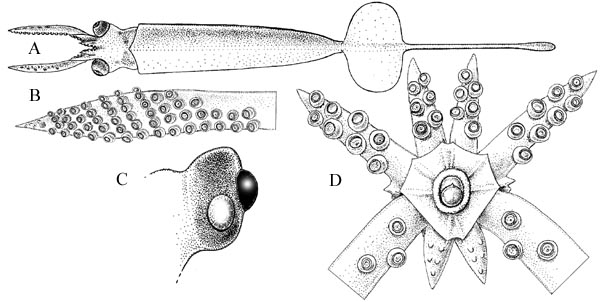
Figure. Paralarva of M. hjorti. A - dorsal view of paralarva, 6.0 mm ML, USNM 730521. B - oral view of tentacular club, same specimen. C - ventral view of eye with ocular light organ, same specimen. D - oral view of brachial crown, same specimen; note small arms III. Drawings from Vecchione, et al. (2001).
Distribution
Type locality: North Atlantic at 36°N, 40°W; 32°N, 33°W; 36°05'N, 43°58'W. The species is also known from the central Pacific (pers. obs.), off South Africa (Roper and Lu, 1990) and the Indian Ocean (Nesis, 1987).
References
Chun, C. 1913. Cephalopoda. Report on the Scientific Results of the "Michael Sars" North Atlantic Deep-sea Expedition 1910, 3(1). Reprinted by Bergen Museum, 1933, 21 pages.
Nesis, K. N. 1982/87. Abridged key to the cephalopod mollusks of the world's ocean. 385+ii pp. Light and Food Industry Publishing House, Moscow. (In Russian.). Translated into English by B. S. Levitov, ed. by L. A. Burgess (1987), Cephalopods of the world. T. F. H. Publications, Neptune City, NJ, 351pp.
Rancurel, P. 1973. Mastigoteuthis hjorti Chun 1913 description de trois ?chantillons proventant du Golfe de Guin?e. Cah. O.R.S.T.O.M., ser. Oc?anogr., 11: 27-32.
Roper, C.F.E. and C.C. Lu 1990. Comparative morphology and function of dermal structures in oceanic squids (Cephalopoda). Smithson. Contr. Zool., No. 493: 1-40.
Vecchione, M., C. F. E. Roper, M. J. Sweeney and C. C. Lu. 2001. Distribution, relative abundance and developmental morphology of paralarval cephalopods in the western north Atlantic Ocean. NOAA Technical Report NMFS 152: 1-58.
Title Illustrations

| Scientific Name | Mastigoteuthis hjorti |
|---|---|
| Location | Western North Atlantic, 24?N, 82?W |
| Comments | Captured with a slurp gun from the Johnson Sea Link II submersible. |
| Specimen Condition | Preserved |
| View | Side |
| Size | 48 mm ML |
| Copyright |
© 2004 Richard E. Young

|
About This Page

National Museum of Natural History, Washington, D. C. , USA
Richard E. Young

University of Hawaii, Honolulu, HI, USA
Page copyright © 2004 and Richard E. Young
All Rights Reserved.
- First online 18 July 2004
- Content changed 19 November 2007
Citing this page:
Vecchione, Michael and Young, Richard E. 2007. Mastigoteuthis hjorti . Version 19 November 2007. http://tolweb.org/Mastigoteuthis_hjorti/19517/2007.11.19 in The Tree of Life Web Project, http://tolweb.org/





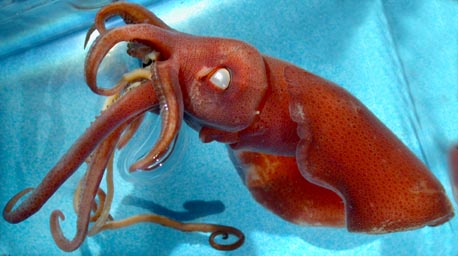
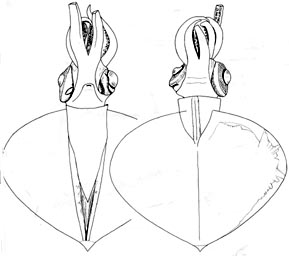
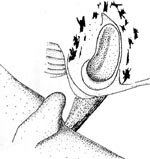
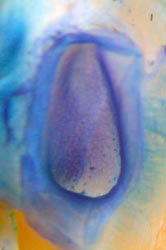
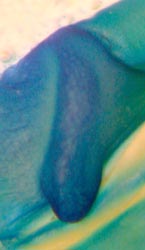
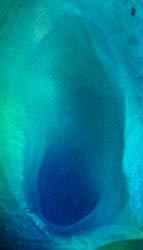
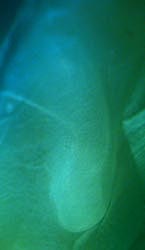
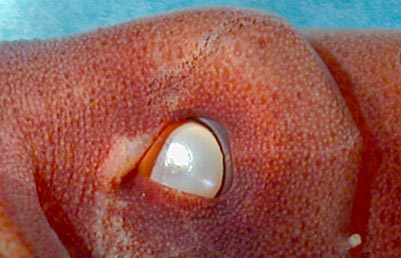
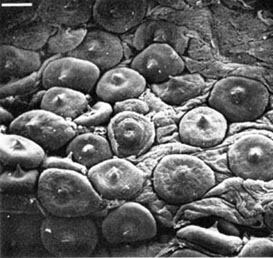
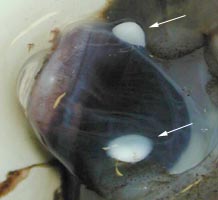
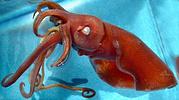
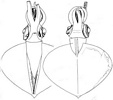


 Go to quick links
Go to quick search
Go to navigation for this section of the ToL site
Go to detailed links for the ToL site
Go to quick links
Go to quick search
Go to navigation for this section of the ToL site
Go to detailed links for the ToL site